People of different ages ride on skateboards. It is suitable for people who enjoy skiing in order to keep fit in the warm season. Even more often on the streets you can see even 4-5-year-old kids, pretty dashingly managing with a moody board.

Features
The first skateboards or skateboards appeared in California in the 1940s. Then it was just ordinary boards with attached wheels - surfers trained on them when there were no necessary waves. In the early 60s, they began to make companies that produce surfboards. And 10 years later, polyurethane wheels were invented, and the popularity of the new sport grew rapidly: there were skateboarding companies, skate parks, the first tricks.
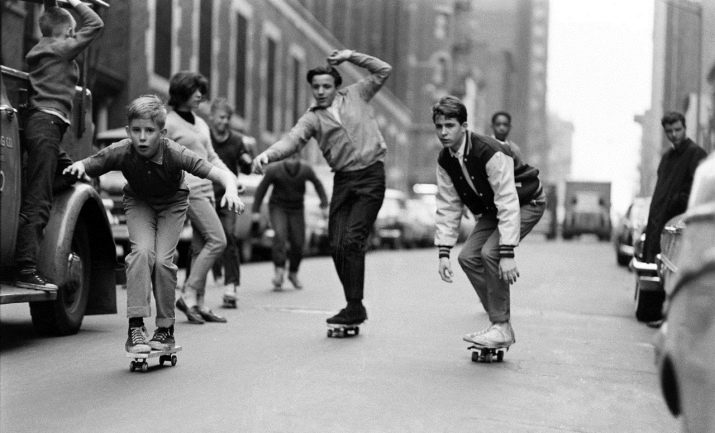
Now skateboarding is an Olympic sport, it will be presented at the games in Tokyo in 2020.
Simply put, any skateboard is a “board”, a small plane of glued layers of wood (maple, bamboo) or fiberglass with two pairs of wheels or rollers. Standing on it and pushing away or changing the position of the body and the force of pressure, you can ride, turn and do different tricks.
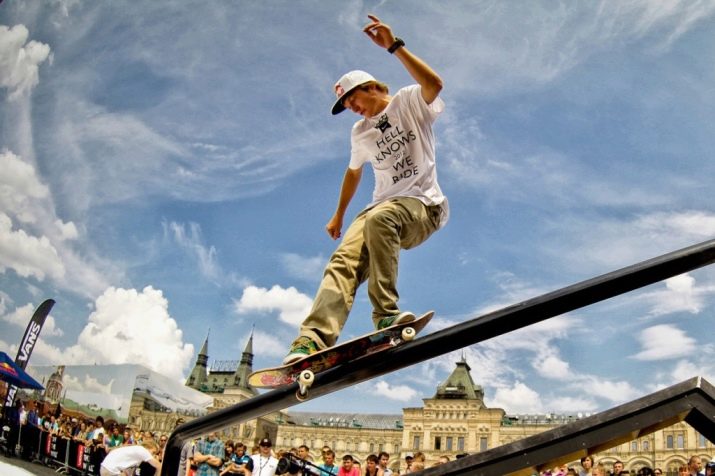
There are several varieties of skateboards depending on the use case or size - from tiny fingerboards to complex stunt boards. The following varieties can be distinguished:
- skate - A special "board" for a variety of tricks;
- longboard - long with larger wheels for a quick ride on asphalt;
- fingerboard - very small, rather it is a copy of the usual, a toy for the fingers;
- mini skateboards - small models mainly for children or miniature adults;
- cruisers - small but very maneuverable boards with soft wheels and a streamlined deck.
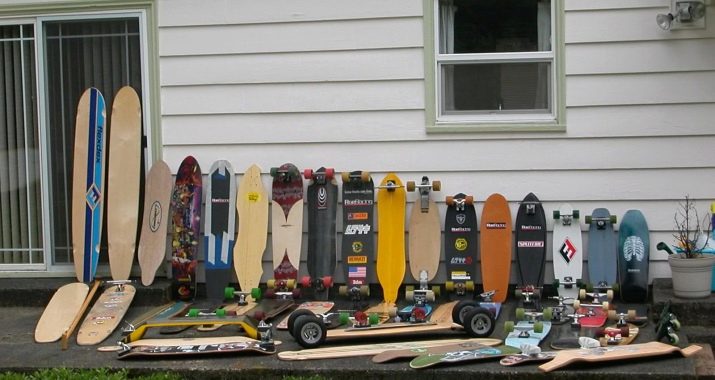
What it is?
Mini skateboards are small boards no more than 24 inches long and 6 inches wide (i.e. less than 61 cm long and 15.25 cm wide). They are mainly intended for young children from 3 years.
But high-quality mini-boards can withstand loads of up to 80 kg, that is, a miniature girl or teenager will be able to ride them.
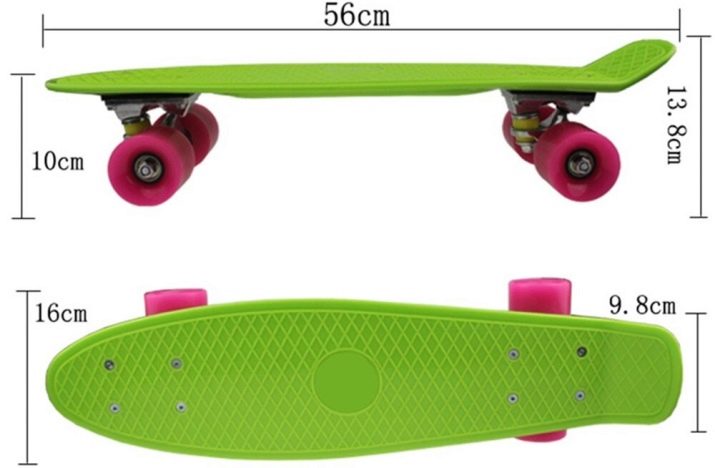
Boards (or decks) for them are made of wood or plastic (they are also called penny boards). Wooden decks are most often made of Chinese maple (9 layers of maple veneer), pendants are made of aluminum or plastic, light and durable (from 3.5 to 5 inches in size), bearings are simple but reliable.
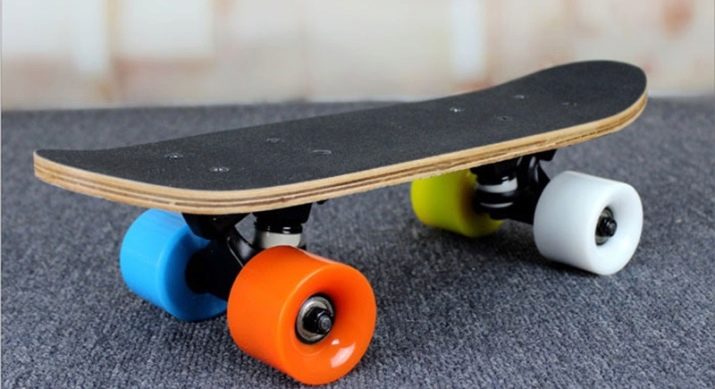
Penny boards are made of very durable plastic, and each manufacturer has its own material. These boards are even smaller - their length is not more than 17 inches (about 43 cm), and their width is 5 inches (less than 13 cm). They are designed for loads of up to 50 kg, but their large wheels smooth out asphalt irregularities.
It’s quite difficult to choose a high-quality and suitable mini-skateboard without knowing some rules - there are so many models.
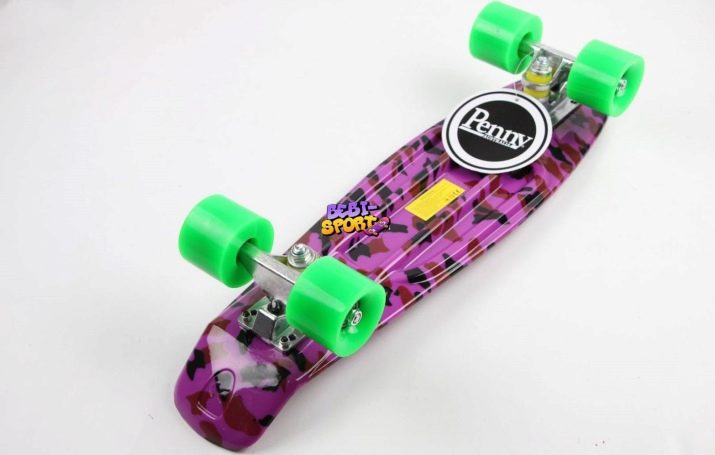
The nuances of choice
It’s better to give preference well-known brands, while you should not chase the cheapness. The brand name is a kind of quality mark.
It should be remembered that the most popular models are most often faked.
A cheap fake of low quality will not only fail quickly and will not allow you to enjoy skiing, but will also create a real health risk.
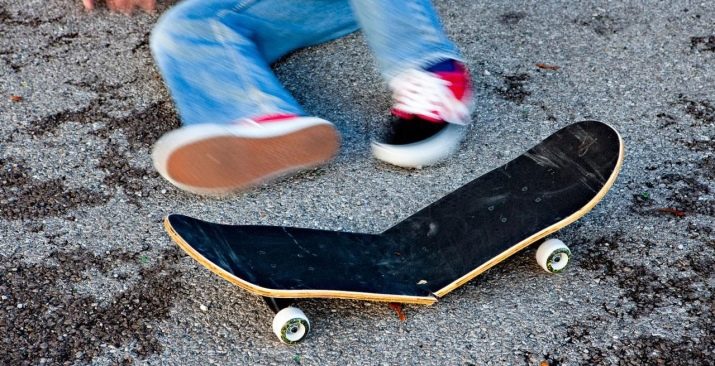
Before buying, study all the pros and cons of a particular brand and model by reading reviews - after all, they are often much more useful than official information and technical specifications.
Having decided on the manufacturer and reading reviews, you need to measure the size of the legs (directly the feet) - this is a key factor for choosing.
The general rule is that the larger the leg (and weight), the longer the deck. In fact, even a 4-year-old child can already be put on a large board (up to 19 cm wide), and he will be able to ride normally. But you can choose a deck and strictly in accordance with the size of the legs.
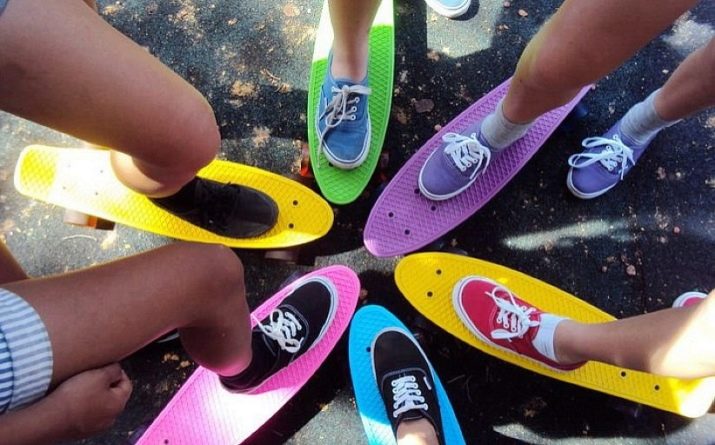
The following categories are available here:
- microdecks - for babies under 5 years old with a foot size of less than 18.5 cm and a weight of up to 20 kg (the width of such decks is about 6 inches or 15.2 cm);
- mini decks Suitable for children aged 6 to 8 years with a foot length of up to 22.5 cm (deck width of about 7 inches or 17.8 cm);
- medium deck 7-7.3 inches wide (17.8-18.5 cm) will be good for students from 9 to 12 years old;
- full deck Useful for teens 13 years of age and older (they are wider than 7.5 inches or 19 cm).
The width of the deck should be less than the size of the leg, that is, it is considered normal when the heel and toe slightly extend beyond the board, as if hanging from it.
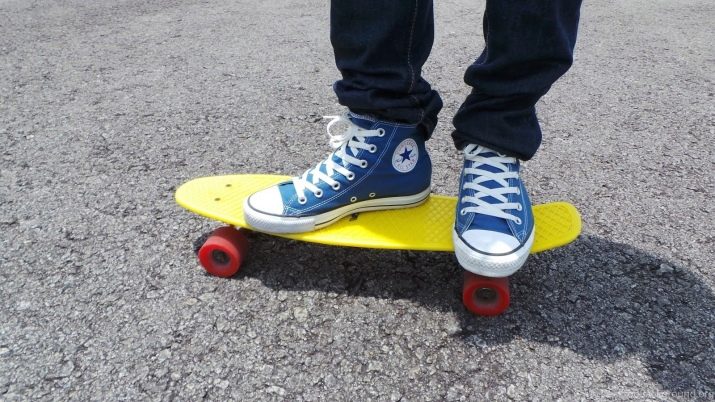
If the board is not the right size, then you can take the skate a little more - it will not affect the skating much, and next year the board will be just right.
The length of the board is also important - because when skating, the legs should be directly above the rollers.
It is worth paying attention to the date of manufacture - especially when it comes to wooden boards. After all, if the deck was stored in a warehouse for a long time, then it could dry out. And such a board can quickly delaminate.
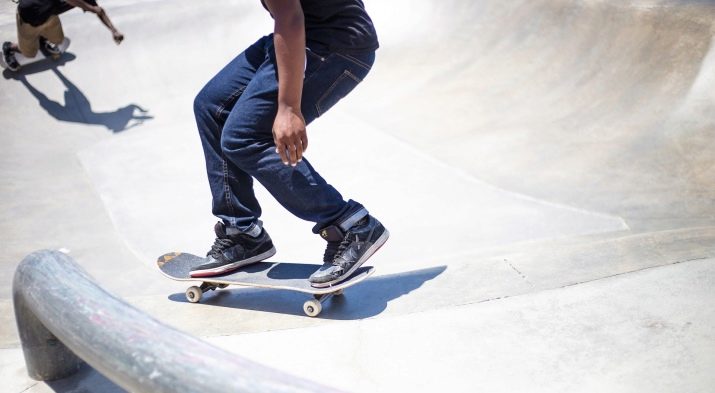
Particular attention should be paid to suspensions and bearings - maneuverability and safety depend on them. The best pendants are made of aluminum or durable plastic. Reliable bearings are made in Japan, the USA, Germany and Sweden, but those made in Russia or Taiwan are often found to be defective. For beginners, ABEC bearings, 1, 2 or 3 classes are suitable.
Wheels for starters are better to choose small and soft - this will facilitate riding, increasing traction.
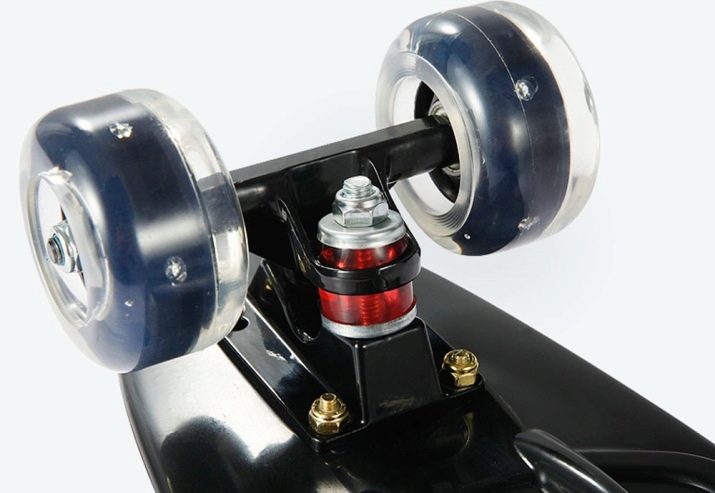
Not always in one ready-made model the necessary parameters can be taken into account.
In this case, you can buy all the parts separately and assemble them yourself, or take the help of specialists.
This is exactly what experienced skateboarders do - they select all the components for themselves. This can be done in small trusted stores - the addresses of skate shops are on all specialized sites and forums.The advantages of such shops are that their owners, as a rule, are fond of skateboarding themselves and are well versed in their product.
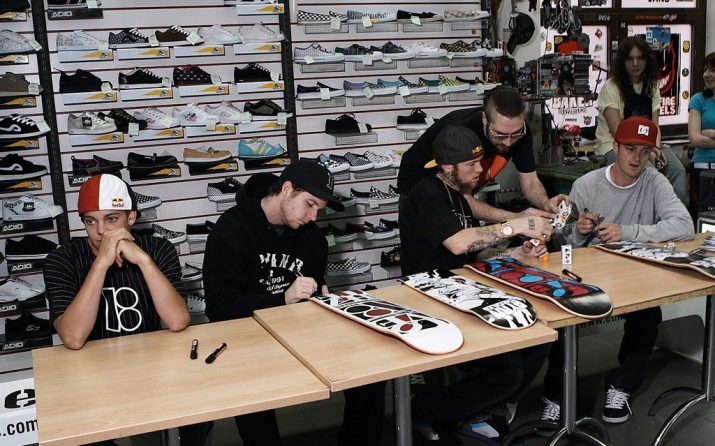
But buying skateboards in chain stores is not recommended, there are too many diverse products, and sellers are often not very well versed in their features.
And the last one. For children or just starting out, in addition to skateboards you should definitely buy a helmet and protection for your wrists, elbows and knees.
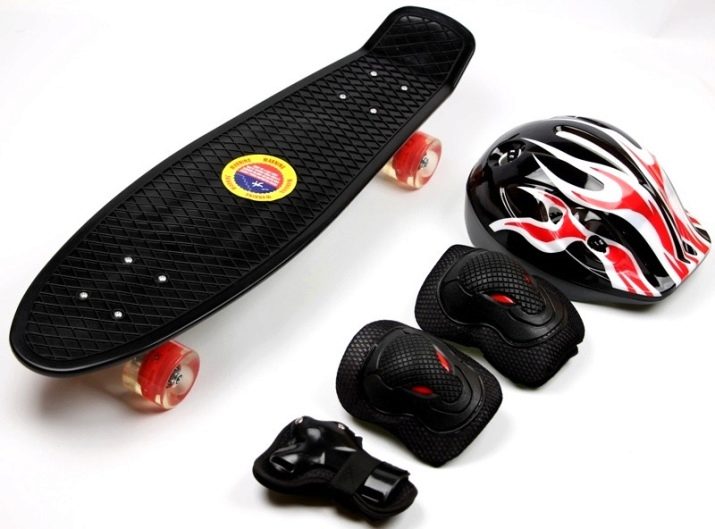
Best model
If you delve into the features of individual parts and their assembly there is no time or desire, then you can buy ready-made models. In this case, you should turn to specialized online stores. They are also owned by people "in the subject", prices are lower than in large offline stores, and the choice is wide. In addition, there is always the opportunity to read customer reviews about a particular board.
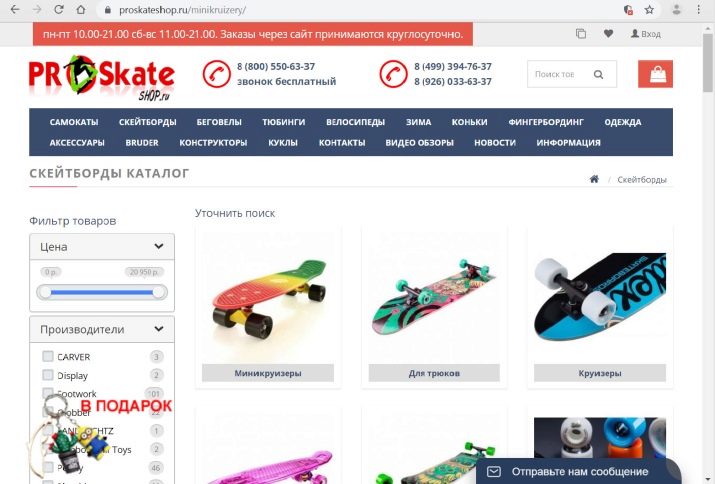
In the category of the best mini-skateboards on the Internet, a model was noticed Jdbug RT03 - tricycle skate for children from 6 years old and weighing up to 80 kg. It is very light (weight 1.4 kg) and compact, can be put in a backpack. The deck is plastic, the suspension is steel, it is very reliable, the bearings are long-playing ABEC 5. There is a niche for the front leg and automatic braking (that is, the skate stops if you jump from it). You can ride it and learn the first tricks. According to customer reviews, after several months of use, only a little plastic deck was frayed.
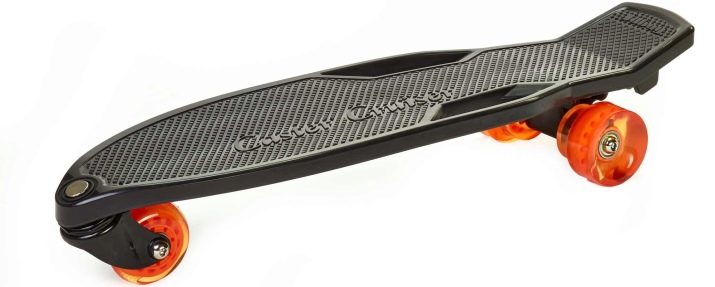
Skiing rules
To start riding on any skateboard, you do not need to have superpowers.
To begin with, it is important to stand on it correctly: the feet are located above the rollers across the board, slightly wider than the shoulders. You can just stand on the board, feel it. The knees need to be slightly bent and spread apart, hands can be balanced.
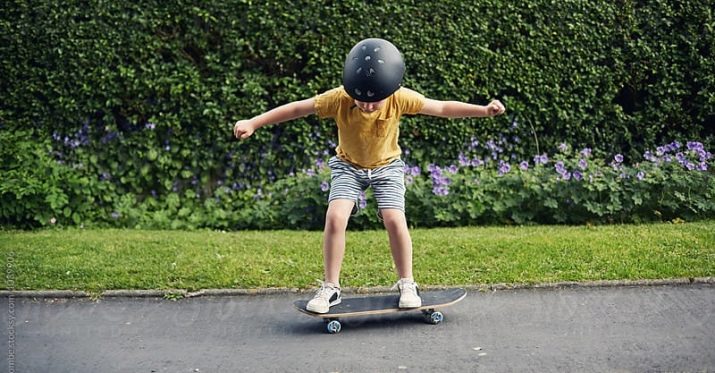
If you just stand there, the skate won't go anywhere. But if you put your toes on the edge, then the rollers from this side will come closer, and under the heels, on the contrary, will move apart in different directions. The board at the same time leans forward. When pressing with the heels, everything will turn out the other way round - the board will lean back.
This is exactly how skateboards are controlled - moving pressure from fingers to heels, and the harder you press, the steeper the turn.

Having mastered this, you can begin to move. It is best to start on a flat surface without a slope. Put one leg over the rollers in front of the skate, and push the leg (for most people, this is the right one) slightly push off, as when riding a scooter, and then put over the rear rollers. If you need to go fast and for a long time, then you should push off the road several times.
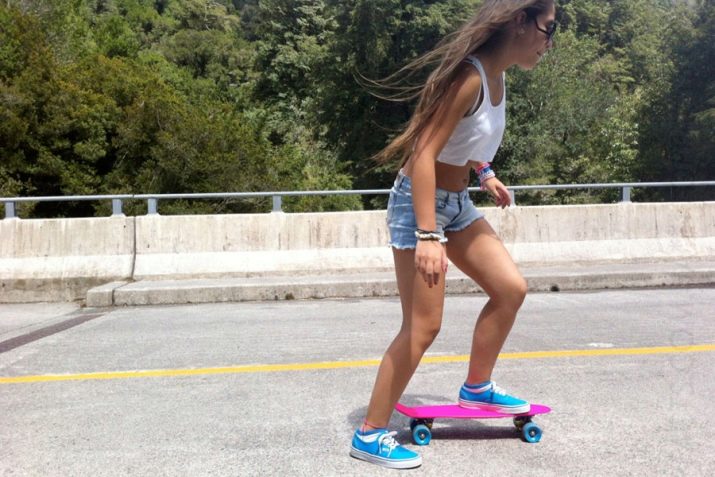
It is very important to learn how to brake. At the same time, one should not jump from a skate riding at full speed - this way both the board and legs can be broken. To stop, you need to slow down: put your leading foot on the ground, and transfer the weight to the back of the skate, with his nose pulled up.
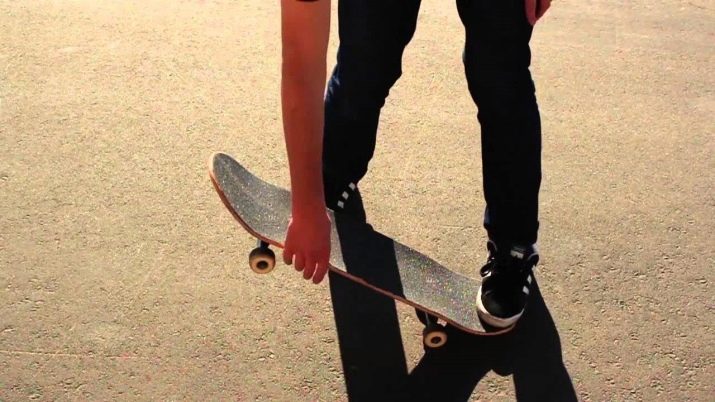
Having mastered the movement on a flat surface and braking, you can try to ride from small slides (a slope of no more than 25-30 degrees). There is no need to push off, but driving will be faster. It's a little harder to ride on a flat surface, but much more interesting.
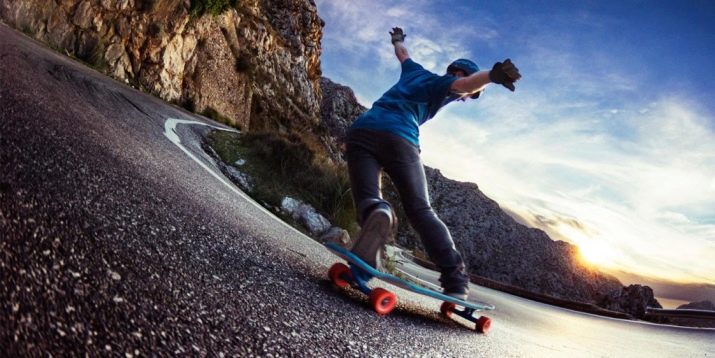
Choosing a good and comfortable mini skateboard is a snap. It is only necessary to adhere to certain rules and not to chase external beauty. And then the pleasure of riding on it will be guaranteed.
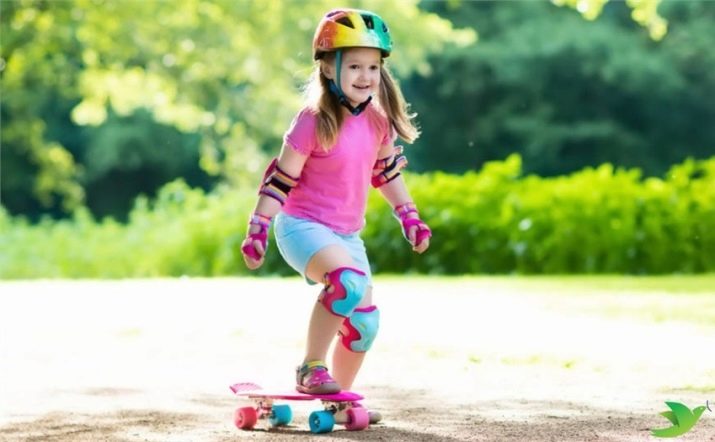
Useful tips for choosing a mini skateboard can also be found in the next video.










